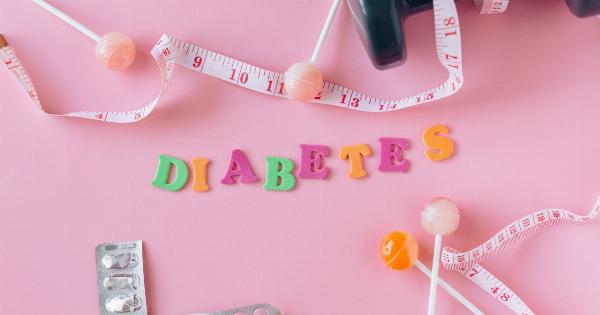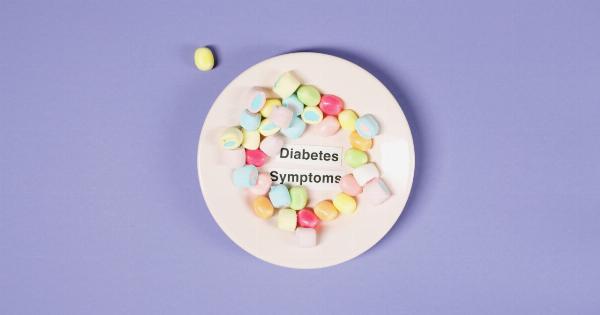Thromboembolism is a medical condition characterized by the presence of a blood clot that can block blood flow or break free and travel to other parts of the body, such as the lungs or brain.
It can have severe and even life-threatening consequences, making it essential to develop a comprehensive prevention plan. The following guide focuses on the steps that individuals can take to reduce their risk of thromboembolism.
1. Understand Your Risk Factors
Some individuals are more susceptible to thromboembolism than others. People who have a family history of blood clots, those who are overweight, or those who lead a sedentary lifestyle may be at greater risk.
Other factors that can contribute to the development of thromboembolism include smoking, pregnancy, and the use of hormone replacement therapy or birth control pills.
It is essential to understand your risk factors and speak to your doctor about any concerns.
They can help you identify potential risk factors and recommend appropriate prevention strategies, such as regular exercise, smoking cessation, or alterations to medications.
2. Stay Active
Physical activity can significantly reduce the risk of thromboembolism by improving blood circulation. Regular exercise can also help combat other risk factors such as obesity, high blood pressure, and high cholesterol.
To reap the benefits of exercise, aim for at least 30 minutes of moderate aerobic physical activity, such as brisk walking, bicycling, or swimming.
Additionally, individuals who spend extended periods sitting, such as those with office jobs, should take breaks every hour and stretch or walk around to promote blood flow throughout the body.
3. Monitor Your Diet
The foods you eat can also impact your risk of thromboembolism. A diet high in saturated fats and cholesterol can increase the likelihood of developing blood clots.
Conversely, foods rich in fiber, healthy fats, and nutrients can improve overall cardiovascular health, reducing the risk of blood clots.
To maintain a healthy diet, aim to consume a variety of fruits, vegetables, and whole grains while limiting saturated and trans fats, added sugars, and processed foods.
Additionally, staying hydrated by drinking plenty of water throughout the day can help thin the blood and promote circulation.
4. Quit Smoking
Smoking can have several harmful effects on the body, including increasing the risk of heart disease and blood clots. Nicotine and other chemicals in cigarettes can damage the blood vessels, making it more difficult for blood to circulate properly.
Quitting smoking can help reduce the risk of thromboembolism and improve overall cardiovascular health. Approaches to quitting smoking may include nicotine replacement therapy, prescription medication, support groups, and behavioral therapies.
5. Wear Compression Stockings
For individuals at higher risk of thromboembolism, wearing compression stockings may help prevent blood clots from forming in the legs.
Compression stockings work by applying graduated pressure to the lower leg, promoting blood flow and preventing blood from pooling in the veins.
Compression stockings may be recommended by a medical professional during long periods of travel or hospitalization or as part of a daily prevention plan. They are available in a variety of styles and compression levels.
6. Follow Medication Guidelines
Several medications can increase the risk of thromboembolism, including birth control pills, hormone replacement therapy, and certain chemotherapy treatments.
Follow medication guidelines as directed by a medical professional and do not stop or change medication without their guidance.
Individuals taking medications with a heightened risk of blood clots may benefit from regular monitoring and testing to detect any potential issues early. Speak to a healthcare provider about the appropriate course of action.
7. Be Proactive During Pregnancy
Pregnant individuals have a heightened risk of developing blood clots, particularly in the legs. Blood clots can be dangerous for both the mother and developing child, making it essential to take active measures to prevent their formation.
During pregnancy, it is recommended to avoid extended periods of immobility, elevate the legs when sitting or laying down, and perform stretches or exercises to improve circulation.
Additionally, pregnant individuals with a history of blood clots should speak with a healthcare provider about potential preventive measures during pregnancy.
8. Seek Medical Attention for Symptoms
Individuals experiencing symptoms of a blood clot should seek medical attention immediately. Symptoms to watch for include sudden swelling or pain in the legs, arms, or chest, difficulty breathing, and sudden headache or vision changes.
If left untreated, blood clots can cause serious complications or death. Early detection and treatment can significantly improve the outcome and reduce the risk of long-term complications.
9. Maintain a Healthy Weight
Obesity can increase the risk of developing thromboembolism, particularly in combination with extended periods of sitting or immobility. Maintaining a healthy weight and reducing excess body fat can help reduce the risk of blood clots.
To achieve or maintain a healthy weight, aim to eat a balanced diet rich in whole foods and reduce portions of high-fat or high-sugar foods.
Additionally, regular physical activity can help burn calories and promote circulation, reducing the risk of blood clots.
10. Focus on Overall Cardiovascular Health
Thromboembolism is just one aspect of overall cardiovascular health. Focusing on improving overall cardiovascular health can help reduce the risk of blood clots and other related conditions.
To improve cardiovascular health, focus on diet, exercise, and healthy lifestyle habits such as quitting smoking and limiting alcohol intake, or stress management.
Annual check-ups with a healthcare provider can also help identify potential concerns early and develop an appropriate prevention plan.
Conclusion
Thromboembolism can have serious and even life-threatening consequences, making it essential to develop a comprehensive prevention plan.
Understanding risk factors, staying active, monitoring diet, quitting smoking, wearing compression stockings, following medication guidelines, being proactive during pregnancy, seeking medical attention for symptoms, maintaining a healthy weight, and focusing on overall cardiovascular health are all effective steps individuals can take to reduce their risk of thromboembolism and improve overall health and wellness.





























